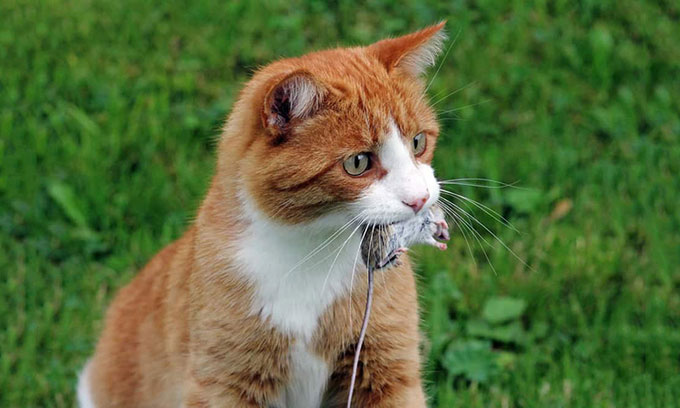The 'mind control' parasite spreads to Hawaii
The researchers first discovered the Toxoplasma gondii parasite, which is capable of controlling mouse behavior, on the island of Oahu in Hawaii.
Toxoplasma gondii has never appeared before on the Hawaiian Islands, so how did they get to Oahu? Lead researcher Grant Sizemore, an invasive animal specialist from the Bird Conservancy in the US, explains the contagious parasite may have "hitchhiked" on domestic cats - the only host. they can reproduce internally.
However, cats are not really to blame because humans are the main cause of T. gondii spread to Oahu. Residents have brought cats from elsewhere to the island. Some of them may have been lost or abandoned, and proliferated to form feral cats. This cat community is threatening native wildlife because it is a source of parasite spread.
T. gondii can be transmitted from cats to most warm-blooded animals, including humans , through the feces . When egg cells invade a new host, they develop into rapid spores (tachyzoites), with the ability to replicate so strongly that it overwhelms the host's immune system and causes serious health problems. .


T. gondii can cause mice to find cats themselves. (Photo: Feline Nutrition ).
In rats, T. gondii can control the behavior of the host, causing the feline rodent to find its own predator. That's exactly what T. gondii wants, because when a cat eats an infected mouse, the spores have a sexual chance to reproduce to complete the life cycle.
The team surveyed feral cats throughout Oahu and discovered up to 32 public places in the presence of T. gondii. The exact number of cats on the island was not recorded but according to Sizemore, there are an average of 23 cats per location.
"The high percentage of T. gondii 's fecal samples of egg feces indicates that the parasite is spreading rapidly in parks and surrounding areas. The concern is that they can be transmitted from cats to most. Warm-blooded animals, including terrestrial, freshwater or marine ecosystems, " Sizemore warned.
The team's findings were published today in the journal Conservation Science and Practice.
- Watch out for deadly parasites from cats
- Production of quick diagnostic rods for parasitic diseases
- Control your tablet, smartphone by thought
- Horrifying parasitic bees control and nibble on the host's body
- For the first time discovered animals not breathing
- Tsunami hit Hawaii
- Almost lost his life because the parasite eats meat
- 7 effects of lotus mind few people expected
- This photo is ravishing until you take a closer look to see a horror truth
- The human mind was re-sketched beautifully
- Scary pictures in Hawaii crater
- Cars control thoughts
- Video: Found strange octopus near Hawaii
- The genome of the malaria parasite is decoded
 Why do potatoes have eyes?
Why do potatoes have eyes? 'Tragedy' the world's largest carnivorous life: Death becomes ... public toilet
'Tragedy' the world's largest carnivorous life: Death becomes ... public toilet Tomatoes were once considered 'poisonous' for 200 years
Tomatoes were once considered 'poisonous' for 200 years Detecting microscopic parasites on human face
Detecting microscopic parasites on human face